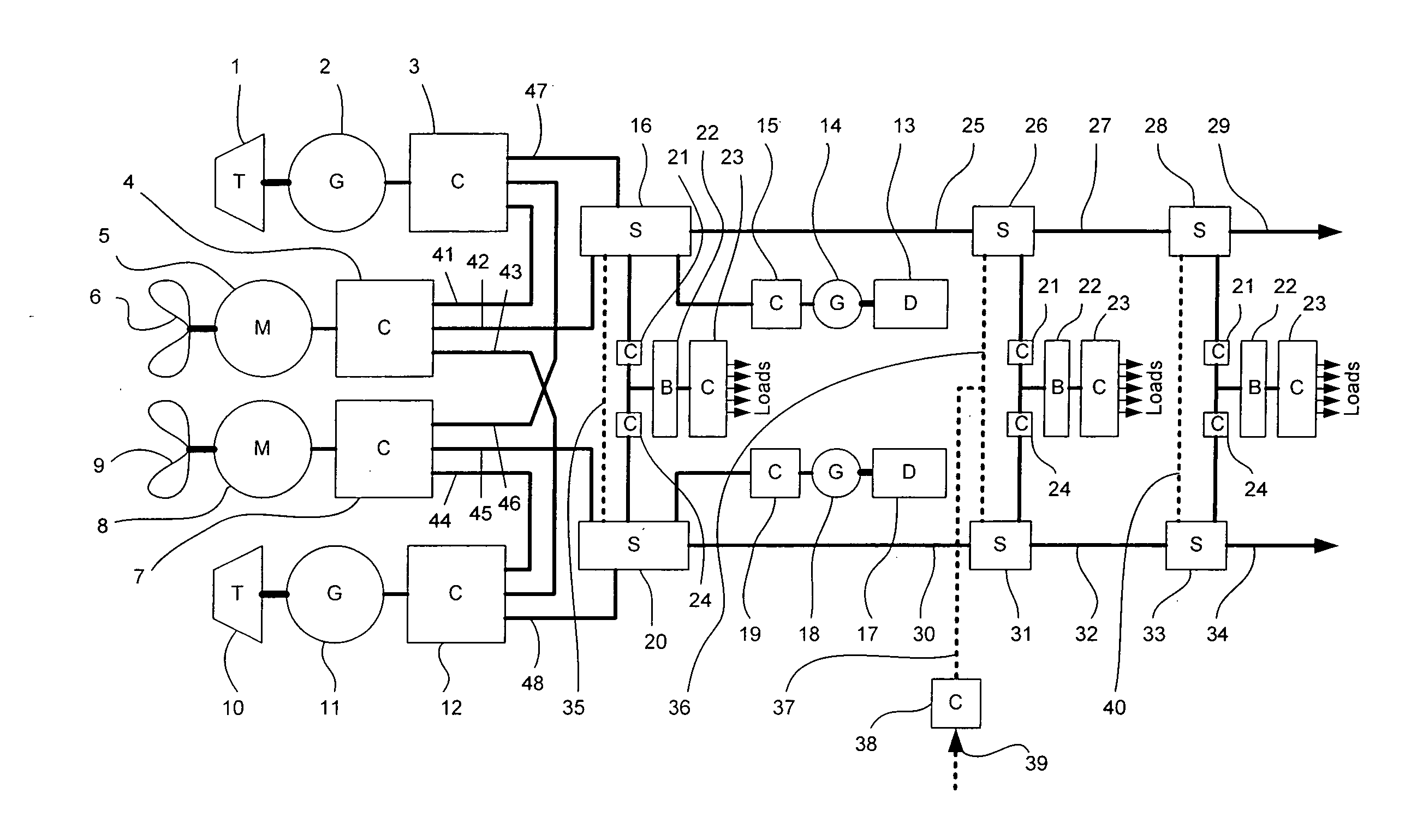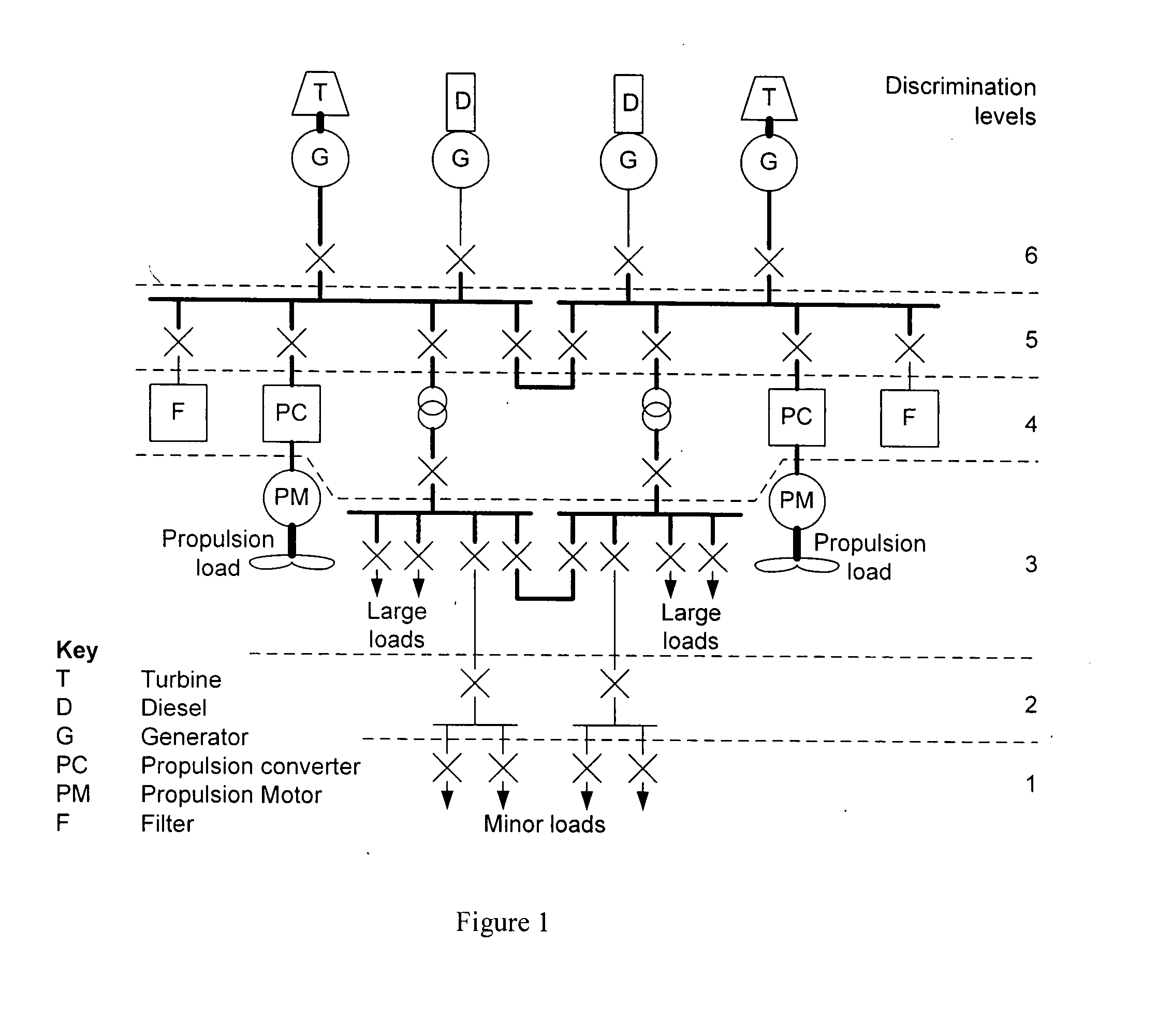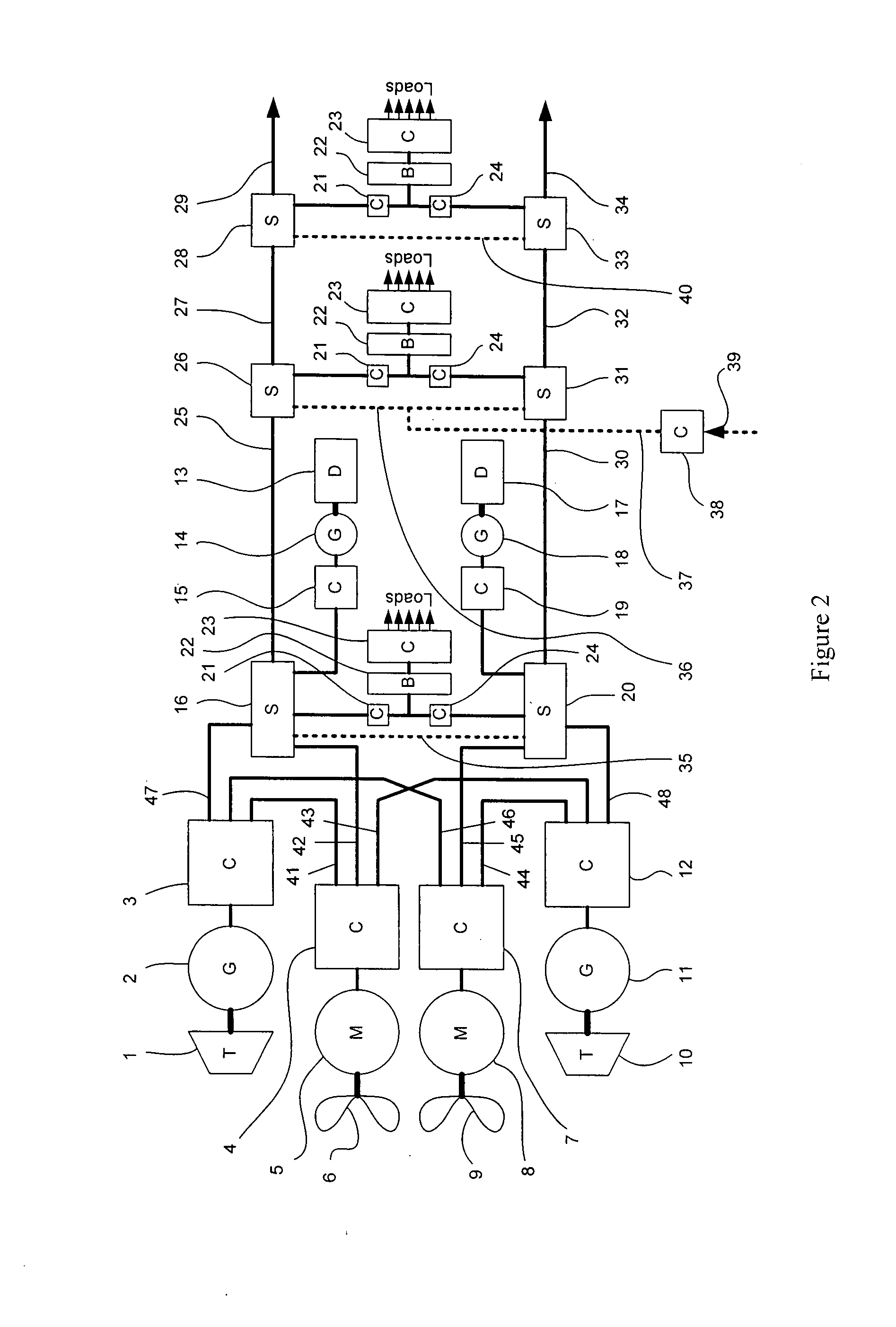Power distribution systems
a technology of power distribution system and power distribution voltage, applied in the direction of dc network load balancing, emergency protective arrangements for limiting excess voltage/current, transmission, etc., can solve the problems of regulated response subject to significant disparities, fault current may exceed the capability of available protective switchgear, and often become problematic, so as to improve the ability to design freedom, increase intelligence and automation, and stabilize the effect of distribution voltag
- Summary
- Abstract
- Description
- Claims
- Application Information
AI Technical Summary
Benefits of technology
Problems solved by technology
Method used
Image
Examples
Embodiment Construction
[0111]Although the following description is directed to a power distribution system for marine applications, and in particular to a power distribution system that is highly suitable for naval ships and submarines, it will be readily understood that a similar topology and control method can be used in other sorts of power distribution systems such as land-based or aircraft-based systems, for example.
[0112]The basic topology of a power distribution system according to the present invention will now be described with reference to FIG. 2. It should be appreciated that all of the inputs, outputs, terminals and interconnections of FIG. 2 are of double pole direct current type.
[0113]A first Propulsion Power Generation System (PPGS) includes a turbine 1 that drives a generator 2 to supply power to an output converter 3. Similarly, a second PPGS includes a turbine 10 that drives a generator 11 to supply power to an output converter 12. A first Propulsion Drive System (PDS) includes a propell...
PUM
 Login to View More
Login to View More Abstract
Description
Claims
Application Information
 Login to View More
Login to View More - R&D
- Intellectual Property
- Life Sciences
- Materials
- Tech Scout
- Unparalleled Data Quality
- Higher Quality Content
- 60% Fewer Hallucinations
Browse by: Latest US Patents, China's latest patents, Technical Efficacy Thesaurus, Application Domain, Technology Topic, Popular Technical Reports.
© 2025 PatSnap. All rights reserved.Legal|Privacy policy|Modern Slavery Act Transparency Statement|Sitemap|About US| Contact US: help@patsnap.com



